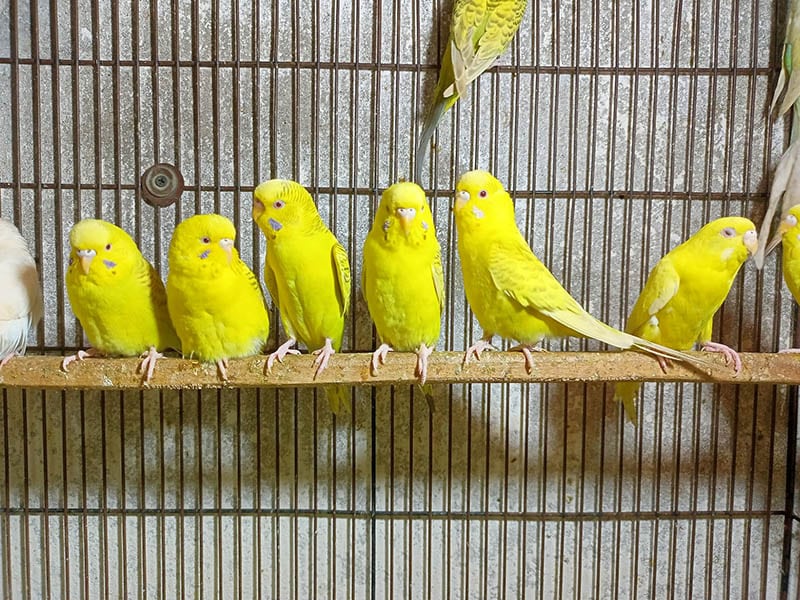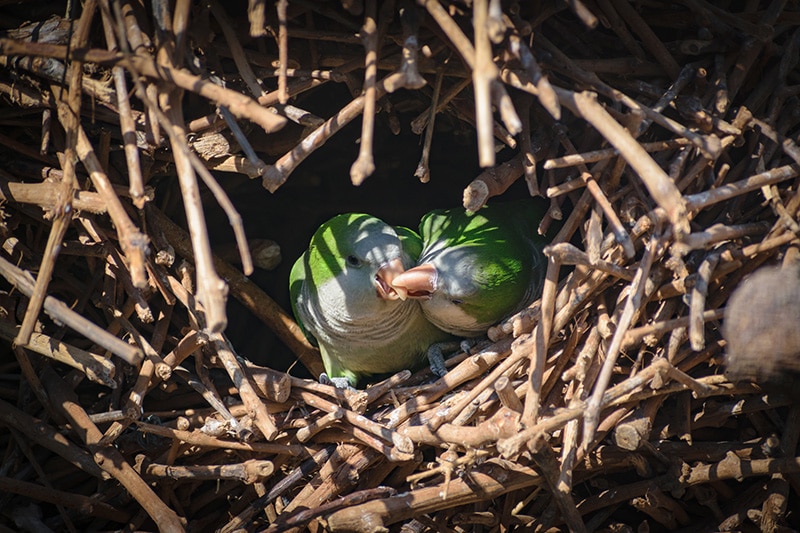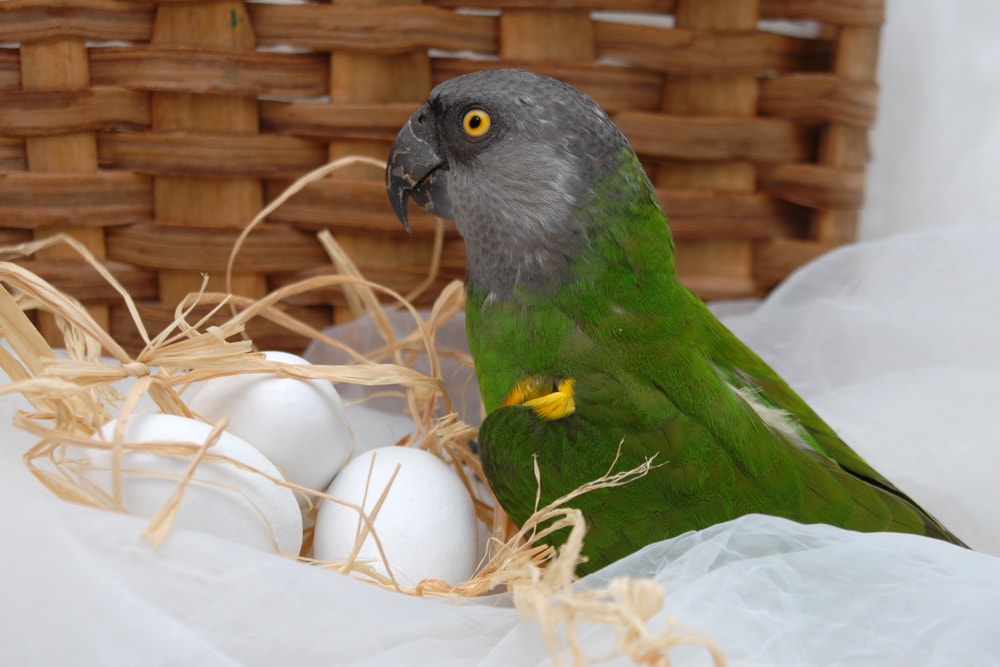Pearl Cockatiel: Facts, Origin & History (With Pictures)
Updated on
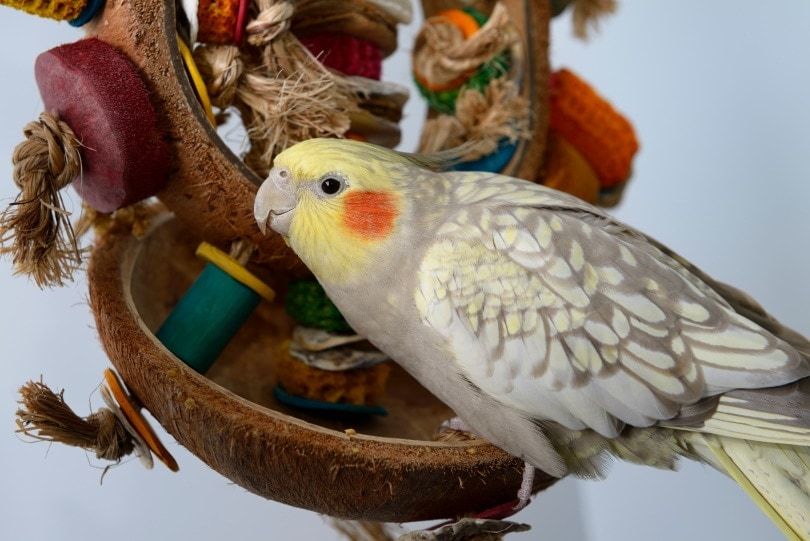
Cockatiels are native to Australia. Wild birds are gray with white markings on their wings and orange spots on their light-colored faces. Selective breeding of captive birds has expanded their range to include pied, lutino, and several other official and unofficial mutations, including the Pearl or Lacewing Cockatiel.
| Height: | 12.5 inches |
| Weight: | 75 – 130 grams |
| Lifespan: | 10 – 15 years |
| Colors: | Yellow, white, and grey |
| Suitable for: | Singles or families with plenty of time to dedicate to them |
| Temperament: | Independent, usually quiet, intelligent |
These birds have beautiful intersecting areas of white and gray, which gives them a pearl-like look. The other name, Lacewing, describes the pattern, which lacks the solid blocks of a single color. The result is stunning.
Pearl Cockatiel Characteristics
The Earliest Records of Pearl Cockatiel in History
The Cockatiel lives in various habitats, typically clustering in small groups or flocks. It is part of the Cacatuidae or Cockatoo family, which it resembles with its unique crest. The bird is social with its own kind and people. That has made it such a popular avian choice, with the Budgerigar or Parakeet taking top honors.
The Cockatiel is only native to Australia, although introduced populations exist in Puerto Rico1. Its adaptable nature and varied diet undoubtedly played a role in it becoming established. The species is the only one in its genus, Nymphicus. Scientists first identified it in 17932. It wasn’t long before this friendly bird became a household pet.

How Pearl Cockatiel Gained Popularity
You can only buy captive-raised Cockatiels since Australia has long since banned exports. Aviculture gave rise to the mutations like the Pearl that we see today. This variation is a sex-linked, recessive trait3. Birds differ from humans in that the female determines the sex of her offspring, having an X-Y gene. The male is X-X. Therefore, the Pearl trait comes from the female passing it to her chicks.
A female will show the trait visually even if she has only one copy or allele in the gene. A male can be visually Pearl only if he has both copies in the pair making up the gene. If one is for normal coloration, it will suppress the Pearl mutation, thus, making it a recessive as opposed to a dominant trait. A male can still carry and pass on the trait even if he is not outwardly a Pearl.
It’s also essential to understand the mutation doesn’t affect the plumage pigments but instead its distribution. That gives the Pearl Cockatiel its unique appearance.
Formal Recognition of Pearl Cockatiel
Mutations like this one became part of the function of organizations like the American Cockatiel Society (ACS). It has a Standard of Perfection that applies to a Cockatiel’s conformation. The group also has color codes and type standards for many popular mutations, such as the Pearl Cockatiel. Selective breeding has introduced second-generation specimens, such as the Pearl-Pied.
Genetics and the nature of sex-linked, recessive traits limit the variations you’ll see. For example, a female Cockatiel that isn’t visually showing Pearl cannot pass on the allele to her chicks. That also applies to Lutino Cockatiels.
Top 4 Unique Facts About Pearl Cockatiel
1. Pearl Cockatiels Came on the Scene in 1967
Undoubtedly, the complicated nature of genetics played a role in the bird’s first appearance. The Pearl trait wasn’t a different color but a variation in the coloration due to the suppression of the pigment melanin. That fact lends itself to countless riffs on the theme.
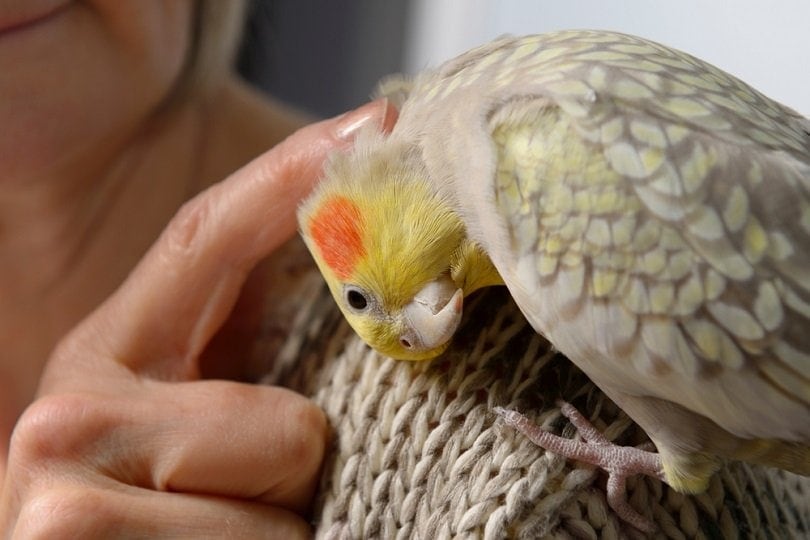
2. Wild Cockatiels Are Nomadic
Wild Cockatiels don’t migrate. They don’t have to in their native land. Instead, they follow the food. Some birds will hang out in urban areas, seemingly unbothered by the presence of people.
3. The Wild Cockatiel Population Is Stable in Its Native Land
According to the International Union for Conservation of Nature and Natural Resources (IUCN), the Cockatiel is a species of least concern with a stable population, albeit with an unknown figure of the number of birds in the wild.
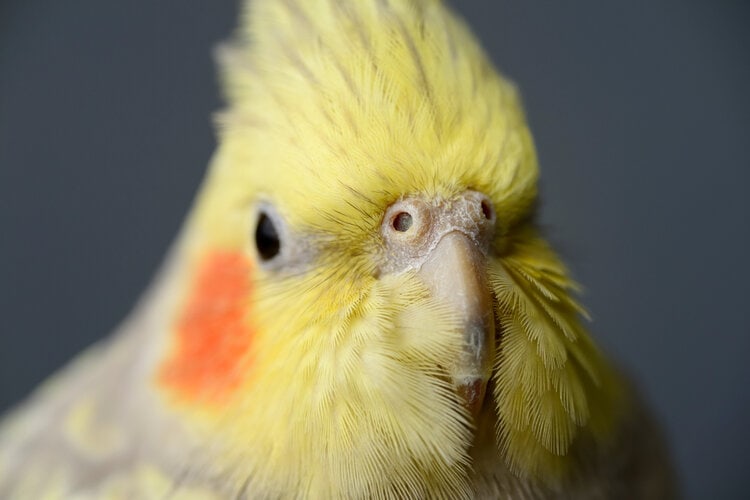
4. Cockatiels Mate for Life
In the wild, Cockatiels have only one mate at a time, making them monogamous. The seasonal pattern of rainfall determines when a mated pair will breed. If they have a choice, Cockatiels prefer eucalyptus trees for nest-building.
Does a Pearl Cockatiel Make a Good Pet?
The Pearl Cockatiel makes a delightful pet. It is friendly and seems to enjoy the company of people. It’s easy to care for and breed if you want to work with other possible mutations. While it isn’t the best talker, the cockatiel is an excellent mimic. It can learn to make a broad spectrum of sounds, whistles, and calls. However, it doesn’t shriek like a parrot, making it a good choice for apartment dwellers.
The primary consideration when thinking about getting a bird is your time commitment. Cockatiels are social animals. They will expect you to step up as a member of the flocks. That means daily playtime and handling to keep your pet social and well-behaved. It’s worth noting that these birds are also relatively long-lived, with some living up to 15 years.
Conclusion
The Pearl Cockatiel is a gorgeous example of careful selective breeding in an already popular bird. The interlacing of light colors and grays creates a beautiful pattern, not unlike its namesake. It also makes for a unique pet, with many variations on the theme. The Cockatiel makes an excellent pet for first-time bird owners. This one adds beauty to the mix.
Featured Image Credit: Reimar, Shutterstock


